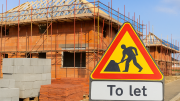House price growth across the UK has slowed sharply to just 1.3% annually, as new stamp duty thresholds bite and more homes flood the market. According to Zoopla’s latest House Price Index, 83% of buyers now face stamp duty costs-up from 49% before April-putting pressure on pricing, particularly in the South. But for landlords, the shift could open doors in high-yield northern regions where demand and value growth remain robust.
Price growth stalls as stamp duty burden rises
The return of full stamp duty rates has created a measurable drag on pricing, particularly in southern England. Buyers are now paying up to £2,500 more per transaction, and more than four in ten first-time buyers are now liable for the tax-more than double the figure seen just three months ago.
Richard Donnell, Executive Director at Zoopla, said: “More homebuyers are paying stamp duty since April and want this extra cost reflected in the price they pay. More supply, especially across southern England, is re-enforcing a buyer’s market.”
The numbers support that view. The average UK house price now sits at £268,400, up just £3,350 year-on-year. This is despite buyer demand rising 11% and agreed sales climbing 8% compared to July 2024, showing that higher transactional costs are holding back meaningful price rises.
Landlords turn attention to northern and devolved regions
While southern markets slow, northern England, Scotland and Northern Ireland are pulling ahead. House prices in Belfast are up 7.8%, while areas like Halifax, Falkirk, and Motherwell are posting gains of over 3.5% year-on-year-suggesting landlords could still achieve meaningful capital growth in well-priced regional cities.
Northern Ireland leads the pack with 6.1% annual growth, albeit from a lower base, while the North West and parts of Wales are also outperforming southern counterparts.
Nathan Emerson, CEO of Propertymark, pointed to government tax policy as a key factor: “Higher stamp duty costs have impacted house prices in some cases, and this is creating additional regional disparities… The UK Government may need to reconsider the real-world effects of increased stamp duty thresholds.”
As affordability limits tighten in southern England, portfolio landlords are already repositioning toward northern postcodes where yields are higher, tenant demand remains stable, and entry prices are more palatable-even with high mortgage rates.
Buyer activity strong, but market confidence needs fuel
The housing market isn’t short of listings. There are now 12% more homes for sale than a year ago, with an average of 37 properties per estate agency branch, according to Zoopla. But despite active demand, price inflation is being capped by affordability limits and rising buyer costs.
David Powell, CEO of Andrews Property Group, said: “The slowdown in house prices is starting to impact consumer confidence. Without a reduction in interest rates or Government intervention, it’s difficult to see any material change for H2.”
With average wage growth not keeping pace with housing costs and mortgage affordability still stretched, the risk for landlords lies in overpaying in softening markets. Yet for those buying wisely-particularly in undervalued regional areas-there’s a clear window for yield-focused acquisitions before any potential policy shift in 2026.








